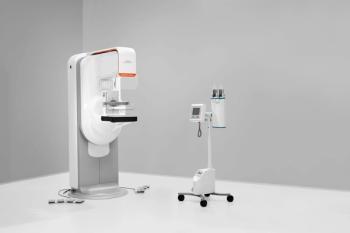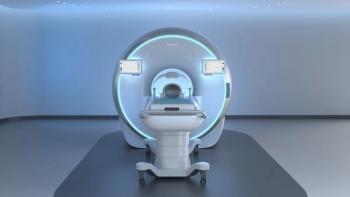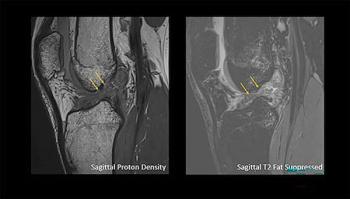
Siemens readies CR mammography offering for RSNA show
Amorphous selenium detector will follow CRSiemens Medical Solutions is preparing to get into full-field digital mammography—but not like its competitors. Most competitors, including companies whose equipment is at or near
Amorphous selenium detector will follow CR
Siemens Medical Solutions is preparing to get into full-field digital mammography-but not like its competitors. Most competitors, including companies whose equipment is at or near market entry, have systems that use flat-panel sensors, which convert x-rays to electrical impulses. Siemens has chosen a different route initially. The company will use phosphor plates as part of its full-field digital mammography-computed radiography (FFDM-CR) system.
The FFDM-CR includes an acquisition station, MammoReport Plus soft-copy reporting station, and CR-mammography reader. The system, which will be featured as a work-in-progress on the RSNA exhibit floor, is a joint development with Fuji Medical Systems. The two companies hope to gain premarket approval from the FDA by late 2002.
“This technology provides all the benefits of a digital mammography system,” said Thomas Stetters, marketing manager for the Siemens special products division in Sweden. “For certain segments of the market, this is a perfect solution in that it requires a lower investment compared with detector-based systems.”
CR mammograms are performed using conventional analog techniques. Digital cassettes are then fed into the Digiscan M CR plate reader. The resulting image is sent to the acquisition station via a high-speed network and displayed on an acquisition monitor.
Siemens has not, however, abandoned flat-panel technology. Instead, strategic planners have mapped out a future that calls for CR and direct digital mammography to coexist. Toward this end, Siemens engineers are developing a digital product built around an amorphous selenium detector. Development of this product is compatible with the company’s decision a year ago to stop working on a system based on an amorphous silicon detector.
“With the limitation of 100-micron pixels and five line pairs (inherent in amorphous silicon detectors), you are at the limit of what is acceptable to the mammography community,” Stetters said. “So we decided to go with selenium.”
Suppliers will make critical components in both the CR and direct digital mammography product types. An as-yet-unnamed company will provide the amorphous selenium detector, while Fuji has agreed to supply proprietary CR reader technology.
CR technology is attractive for several reasons, according to Stetters. It is believed to be highly reliable and economically viable for low-volume imaging centers, and the 10 x 12-inch plates make the system useful for applications other than mammography. Image quality and spatial resolution-eight line pairs-are excellent, Stetters said.
“The feedback we’re getting is that the images acquired are absolutely comparable to film,” he said. “And the technology offers all the benefits of full-field digital mammography.”
The company has only recently begun the process of seeking FDA approval, according to Stetters. Even so, he believes no major changes in the reader technology will be required by the agency, although other components-the reporting station, for example-may need modifications.
While image quality will determine the technology’s usefulness, the key to its success will be the Mammomat 3000 Nova system, which is both a conventional screen-film system and the company’s platform for digital technologies. FFDM-CR is being designed as a seamless upgrade to the system, the company said.
Newsletter
Stay at the forefront of radiology with the Diagnostic Imaging newsletter, delivering the latest news, clinical insights, and imaging advancements for today’s radiologists.




























